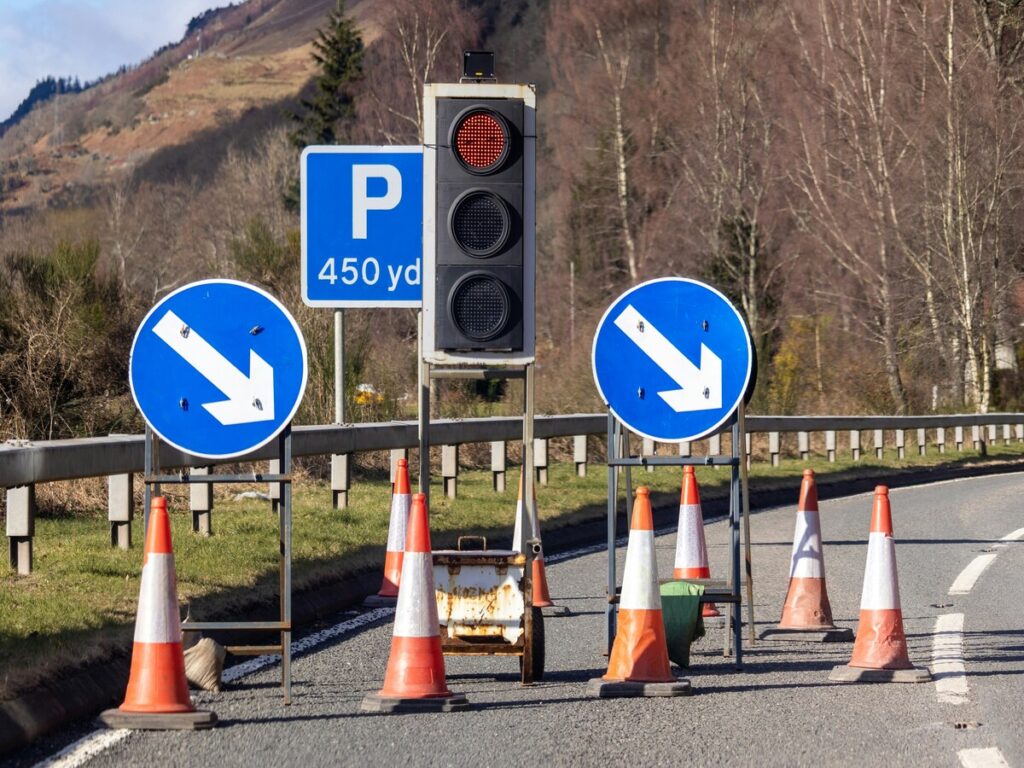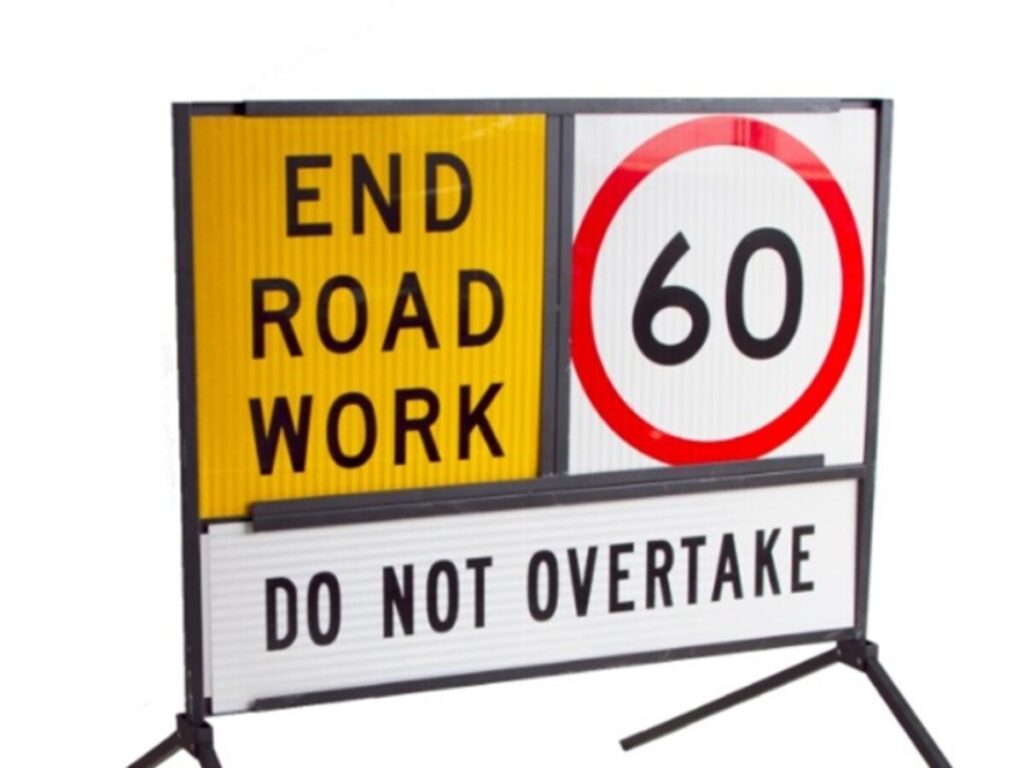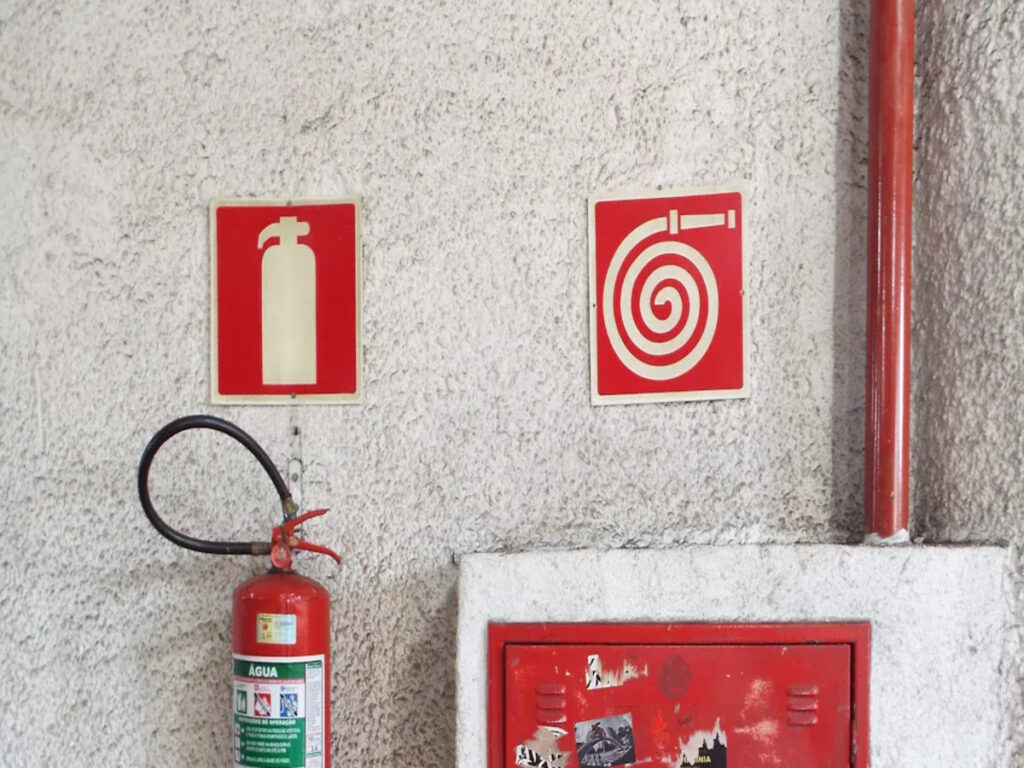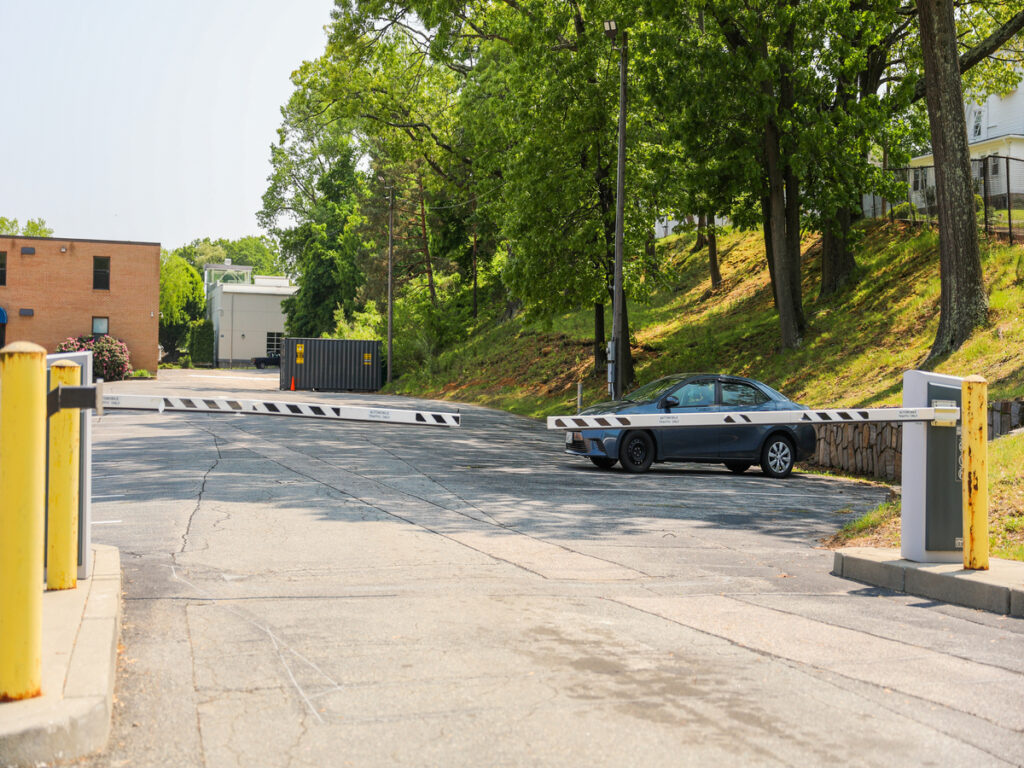
Sie stehen jedes Mal, wenn Sie einen Parkplatz betreten. Parkplatzpoller stehen als kritische Werkzeuge zum Schutz von Menschen und Eigentum. Jedes Jahr, Tausende von Verletzungen und Immobilienverlusten treten auf, da Fahrzeuge gegen Gebäude stürzen, oft auf Parkplätzen. Parkenpoller verhindern physisch, Autos in Fußgängerzonen zu betreten, Verkehrsfluss steuern, und Verwirrung verringern. Studien zeigen Gebiete mit Metall -Bollerschutz. Sie sehen weniger Fußgängerunfälle und eine verbesserte Sicherheit. Wenn Sie die richtigen Parkstolls verwenden, Sie schaffen sicherere Räume und bessere Kontrolle für alle.
Optraffic bietet hochwertige parking traffic bollards designed to provide robust protection for pedestrians and property. With durable materials and innovative designs, OPTRAFFIC bollards help manage traffic flow, Unfälle verhindern, and enhance safety in parking lots. Whether for commercial spaces or public areas, OPTRAFFIC ensures reliable and effective bollard solutions to keep your environment secure.
Key Takeaways
- Parking lot bollards protect people and property by preventing vehicle accidents and controlling traffic flow.
- Different bollard types serve different needs: plastic for low-speed areas, steel for strong protection, and retractable for flexible access.
- Choose bollards based on impact resistance, material durability, Sichtweite, and installation method to match each parking lot zone.
- Proper placement and spacing of bollards improve safety by guiding vehicles and protecting pedestrians.
- Regular maintenance keeps bollards effective and visible, helping to avoid accidents and costly repairs.
Parking Lot Hazards
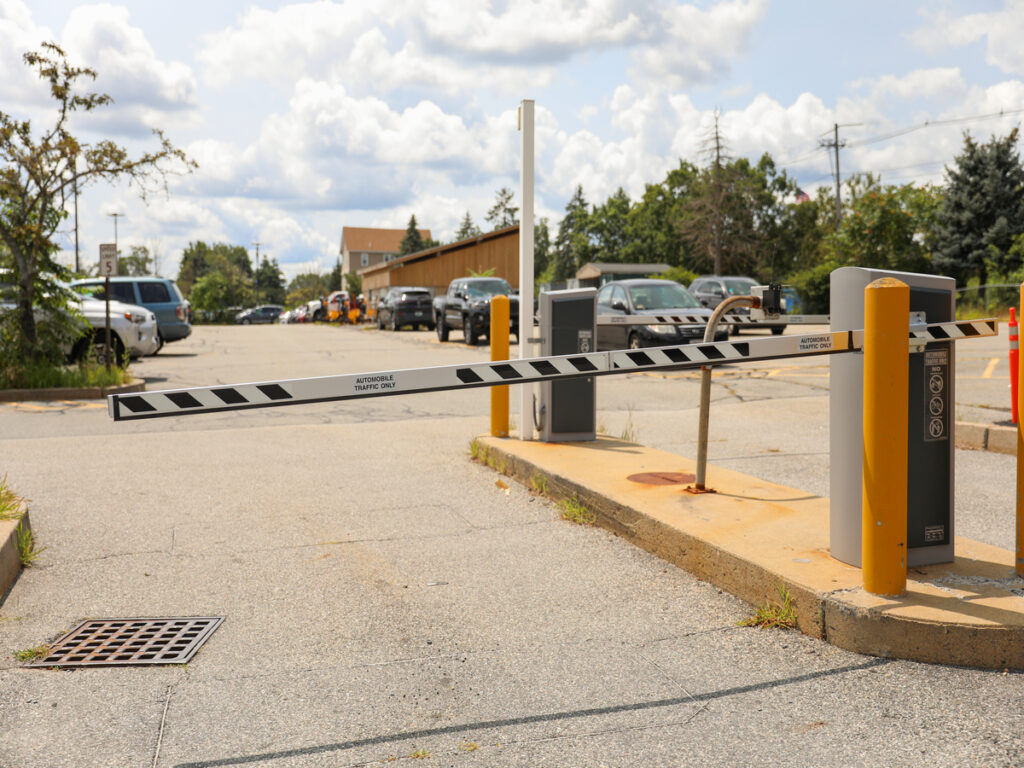
Parking lots present unique dangers that you must address to ensure parking lot security and effective control. Understanding these hazards helps you choose the right bollard for each situation.
Vehicle Roll-Aways
Unattended vehicles can roll away and cause serious harm. Zwischen 2008 Und 2015, roll-away incidents led to an estimated 787 Todesfälle und 17,000 Verletzungen, mit 17% of all non-traffic deaths and injuries linked to rollaways. Many of these incidents happen in parking areas where vehicles are left in neutral or with faulty brakes. You can use bollards to stop vehicles before they reach pedestrian zones or storefronts, improving control and safety.
| Jahr(S) | Deaths Due to Rollaways | Injuries Due to Rollaways |
|---|---|---|
| 2015 | 142 | 2,000 |
| 2008 – 2015 | 787 (estimated total) | 17,000 (estimated total) |
Fußgängerunfälle
Fußgängersicherheit remains a top concern in high-traffic areas. Über 60,000 people suffer injuries in parking lots each year, and more than 500 lose their lives. Children aged 0 Zu 4 face the highest risk of fatal accidents, while adults aged 45 Zu 54 experience the most nonfatal injuries. Most crashes occur in retail parking areas, vor allem während der Stoßzeiten. Bollards create clear boundaries and help control vehicle movement, reducing the risk of pedestrian accidents.
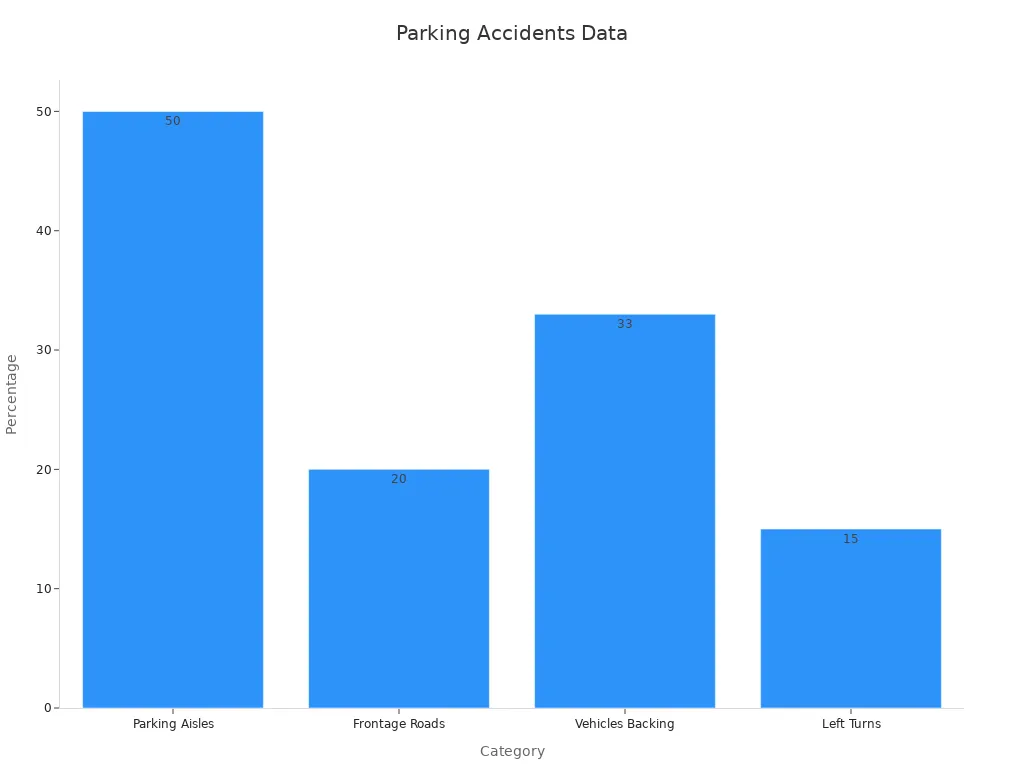
Storefront Crashes
Storefront crashes are a frequent and costly problem. Vehicles often strike the front of stores due to pedal errors or poor parking lot design. Zum Beispiel, gas stations and convenience stores experience up to 20 vehicle-into-building crashes per day nationwide. Retailers with thousands of locations report multiple crashes daily. Installing the right bollard in front of stores provides a physical barrier, protecting property and people from these unpredictable events.
- Storefront accidents often result from driver error or lack of protective features.
- Many incidents occur in parking lots with nose-in parking and direct entrances.
Lane Confusion
Lane confusion disrupts traffic flow and increases the risk of collisions. Poorly marked lanes or unclear entry and exit points can cause drivers to make sudden moves. Bollards guide vehicles and pedestrians, ensuring smooth control and reducing blocked exits or dangerous turns. Proper placement of parking lot bollards supports organized movement and enhances safety in busy parking areas.
Tipp: Consistent bollard spacing—such as 4 Zu 5 feet apart in vehicle-sensitive zones—prevents unauthorized vehicle access and keeps pedestrians safe.
Types of Parking Lot Bollards

Choosing the right security bollards for your parking lot starts with understanding the main types available. Each bollard post offers unique benefits for traffic control, Sicherheit, and property protection.
Plastic Traffic Bollard
Plastic traffic bollards provide lightweight, flexible solutions for guiding vehicles and marking pedestrian zones. You can install these parking bollards quickly, making them ideal for temporary events or changing traffic patterns. They absorb minor impacts and return to shape, reducing damage to vehicles and the bollard itself. Many plastic traffic bollards meet crash test standards, such as ASTM F3016, which means they can withstand low-speed impacts common in parking lots.
Notiz: Plastic traffic bollards work best in areas with frequent low-speed impacts or where you need to change layouts often.
Profis:
- Einfach zu installieren und zu bewegen
- Highly visible with bright colors
- Minimal maintenance required
Nachteile:
- Not suitable for stopping heavy vehicles at high speeds
- Less durable than steel in high-risk zones
Steel and Stainless Steel Bollard
Steel and stainless steel security bollards deliver strong, long-lasting protection. You often see these fixed bollards in front of storefronts or in high-traffic areas. Edelstahl -Poller resist corrosion and weathering, making them a smart choice for outdoor use. These parking bollards require little maintenance and offer a sleek, Professioneller Look.
- Stainless steel bollards last for years, Auch in harten Umgebungen.
- They provide a physical barrier against vehicle intrusion.
- You can customize these bollard posts for specific needs.
Profis:
- High impact resistance
- Long service life
- Niedrige Wartung
Nachteile:
- Heavier and more difficult to install
- Höhere Vorabkosten
Abnehmbare und einziehbare Poller
Removable bollards and retractable bollards give you flexibility in managing access. You can unlock and remove these security bollards when you need to allow vehicles through, then replace them to restore protection. Retractable bollards retract into the ground, keeping the area clear when not in use. These parking bollards work well for emergency access points, loading zones, or areas with changing traffic needs.
Beste Anwendungsfälle:
- Vorübergehende Schließungen
- Emergency vehicle access
- Eventmanagement
Flexible Poller
Flexible bollards combine the benefits of durability and flexibility. These security bollards bend on impact and return to their original position, making them perfect for guiding traffic without causing damage. You can use flexible parking bollards in areas with frequent low-speed impacts or where you want to avoid vehicle damage.
Profis:
- Withstand multiple impacts
- Reduce maintenance costs
- Maintain visibility after impact
Nachteile:
- Not designed for high-speed or heavy vehicle impacts
- Less robust than fixed bollards in high-risk areas
| Bolletyp | Schlagfestigkeit | Haltbarkeit | Typical Use in Parking Lots |
|---|---|---|---|
| Plastic Traffic | Absorbs low-speed bumps | Hoch, flexibel | Lane guidance, Fußgängerzonen, temp setups |
| Steel/Stainless | Hoch, stops vehicles | Sehr hoch, wetterfest | Ladenfronten, high-risk zones, fixed barrier |
| Flexibel | Kurven, absorbs impacts | Hoch, returns shape | Lane marking, Bereiche mit geringer Geschwindigkeit |
Tipp: Use a mix of fixed bollards, retractable bollards, and flexible bollards to match each parking lot zone’s needs.
Choosing Bollards: Schlüsselfaktoren
When choosing bollards for your parking lot, you need to match each bollard’s features to the specific risks and zones in your space. The right security bollards help you protect people, Eigentum, und Verkehrsfluss. This section guides you through the most important factors to consider.
Schlagfestigkeit
You must assess the impact resistance requirements for each area of your parking lot. Hochrisikozonen, such as storefronts or main entrances, need security bollards that can stop vehicles traveling at higher speeds. Im Gegensatz, pedestrian walkways or temporary event spaces may only need bollards that absorb low-speed bumps.
A comprehensive study used crash tests and computer models to measure how well different bollard systems withstand vehicle impacts. These tests showed that fixed, crash-rated bollards can stop lighter vehicles at speeds up to 64 km/h. Jedoch, heavier vehicles require even stronger solutions. When choosing bollards, always consider the weight and speed of vehicles that might enter your lot.
Tipp: Use crash-rated steel or concrete bollards in high-risk areas to maximize protection.
Material und Haltbarkeit
Material choice directly affects the durability and maintenance needs of your security bollards. Steel and stainless steel offer excellent strength and weather resistance, making them ideal for high-traffic or outdoor locations. Concrete bollards provide reliable, long-term protection and require little upkeep. Plastic bollards work well for temporary setups or low-risk zones, but they need more frequent replacement.
| Bollard Material | Langlebigkeit & Haltbarkeit | Profis | Nachteile |
|---|---|---|---|
| Beton | Lasts decades with proper care | Stark, Niedrige Wartung | Schwer, less flexible |
| Steel/Stainless | Hohe Haltbarkeit, korrosionsbeständig | Schlank, wetterfest | Höhere anfängliche Kosten |
| Plastik | Weniger langlebig, Einfach zu installieren | Leicht, kostengünstig | Needs more replacement |
| Holz | Weniger langlebig, can decay | Inexpensive | Häufiger Austausch |
Steel and stainless steel security bollards stand out for their minimal maintenance and long service life. Retractable and collapsible bollards use durable materials like galvanized steel or aluminum, which resist corrosion and impact. These features help you reduce long-term costs and keep your parking bollards effective.
Visibility and Height
Visibility is a key factor in preventing accidents and ensuring that drivers and pedestrians see your security bollards. Choose bright colors, Reflektierende Bänder, or illuminated bollard posts for areas with low light or heavy traffic. The height of your bollard should match the vehicles in your lot. Most parking bollards range from 36 Zu 48 Zoll groß, making them easy to spot without blocking sightlines.
Notiz: Consistent height and color help drivers recognize bollard functions and avoid confusion.
Montage und Installation
The way you install your security bollards affects both their performance and flexibility. Permanent installations, such as pier-type footings or in-ground mounts, provide the strongest protection. Shallow mounts work well when you want to avoid damaging underground utilities. Surface-mounted and removable bollards allow for quick changes in layout, which is useful for event spaces or temporary closures.
- Pier-type footings create a fixed, secure barrier.
- Shallow mounts use prefabricated units for easy installation.
- Surface mounts offer rapid deployment and removal.
- Removable bollards provide flexibility for changing access needs.
Proper spacing and foundation design are essential for maintaining crash-rated performance. Always follow tested installation methods to ensure your bollard post works as intended.
Compliance and Budget
When choosing security bollards, you must consider ADA compliance, local building codes, and your budget. ADA guidelines require clear pathways for people with disabilities, so place bollards far enough apart to allow wheelchair access. Local codes may specify minimum impact resistance or material standards for parking bollards.
Your budget will influence the type and number of bollards you can install. Fixed bollards often have lower upfront costs, while retractable or decorative options may cost more but offer added flexibility or aesthetic value. Maintenance costs also vary by material and design.
Aufbieten, ausrufen, zurufen: Always check local regulations before installing security bollards to avoid costly mistakes.
Matching Bollard Features to Parking Lot Needs
You can enhance safety and control by matching bollard features to the unique risk profile of each parking lot zone. Here are some real-world examples:
- Urban parks and plazas use retractable bollards to allow emergency vehicle access during events, then raise them to protect pedestrians.
- Pedestrian-only zones rely on retractable bollards to restrict vehicles during busy hours.
- Flexible bollards adapt to changing access needs, balancing security and convenience.
- Times Square in New York City uses steel-reinforced, crash-rated bollards to protect millions of pedestrians.
- Decorative and crash-resistant bollards in Paris’s Place de la Bastille show how you can combine safety with aesthetics.
- Parking lots use bollards to prevent cars from entering unsafe spots and to keep sidewalks clear for pedestrians.
- Concrete sphere bollards in front of government buildings illustrate how you can customize bollard features for specific security needs.
When choosing bollards, always evaluate the risk, zone, and budget for each area. This approach ensures you select the right security bollards for every part of your parking lot.
Traffic Bollard Placement & Wartung
Strategische Platzierung
You need to start with a clear plan before you install any security bollards. Begin by walking your site and identifying high-risk zones, wie Ladenfronten, Fußgängerübergänge, and entry or exit points. Use security bollards to separate a parking area from walkways or building entrances. Place each bollard no more than 36 inches apart to prevent vehicles from slipping through gaps. This spacing also helps you meet safety standards and keeps people safe. Think about how you want to guide both cars and pedestrians. A well-placed traffic bollard can direct vehicles, block unsafe shortcuts, and create clear paths for foot traffic.
Installationsmethoden
Choosing the right installation method for your security bollards depends on your needs and the level of protection you want. Embedded bollards require deep concrete foundations. This method gives you the highest impact resistance and works best for critical areas, like storefronts or main boundaries. Surface-mounted bollards are easier and faster to install. You can use them in places where you need flexibility, but they offer less protection against strong impacts. Retractable security bollards use mechanical systems and let you control access for special events or emergency vehicles. These need regular servicing to keep them working smoothly. Passive bollards, which you can install with compacted gravel and concrete fill, are easier to replace and cost less. Active bollards, which protect against higher impacts, need robust concrete footings.
Wartungstipps
Regular maintenance keeps your security bollards effective and looking good. Inspect each bollard for dents, Rost, oder lose Teile. Clean them often to keep colors and reflective bands bright. Für einziehbare Poller, check the moving parts and lubricate them as needed. Repaint or replace faded markings to maintain visibility. Schedule annual checks for all security bollards, vor allem in Gebieten mit hohem Handel. Quick repairs and routine care help you avoid bigger problems and keep your parking lot safe year-round.
Selecting the right parking lot bollards helps you protect people and property while reducing liability. You improve safety when you match each bollard type to the specific hazards and zones in your lot. In environments such as residential EV charging stations, where clear traffic guidance and protective barriers are both essential, bollards secure equipment while delineators define vehicle paths. To learn how to integrate both solutions effectively, Schauen Sie sich den Blog an Parkplatz -Graben: Verbesserung der Sicherheit und Effizienz in Ladestationen mit Elektrofahrzeugen in Wohngebieten.
FAQ
How tall should parking lot bollards be?
You should choose bollards between 36 Und 48 Zoll groß. This height makes them easy for drivers and pedestrians to see. It also helps block vehicles without blocking the view of signs or people.
Can plastic bollards withstand minor car bumps?
Plastic bollards can handle low-speed bumps from cars. They bend and return to shape after impact. You can use them in areas where vehicles move slowly or where you need flexible traffic control.
Do all storefronts need steel bollards?
You should install steel bollards in front of storefronts with high foot traffic or risk of vehicle crashes. Steel bollards provide strong protection for people and property. Some stores may not need them if the risk is low.
How far apart should I place parking lot bollards?
You should space bollards about 36 Zu 48 Zoll auseinander. This distance stops cars from driving through gaps but still lets people walk between them. Always check local codes for exact spacing rules.
What is the best way to maintain parking lot bollards?
You should inspect bollards often for damage or fading. Clean them to keep colors bright. Replace damaged reflectors or repaint as needed. Regular checks help you keep your parking lot safe and looking good.




